Home to numerous mountain ranges, desert valleys, and other varied topographies, the state of Nevada provides a haven for a variety of mushroom species.
Whether you are an experienced mycologist or a novice fungal forager, there is something to discover among the fungi-filled terrain.
Although it may be intimidating at first, exploring the world of mushrooms in Nevada can open up unique culinary experiences and educational opportunities alike.
From the popular edible morel mushrooms found in the northeastern region of the state, to shelf fungi found near Lake Tahoe in the west, there is something for everyone interested in exploring these fascinating fungi.
List of Mushrooms in Nevada
1. Fluted Elfin Saddle
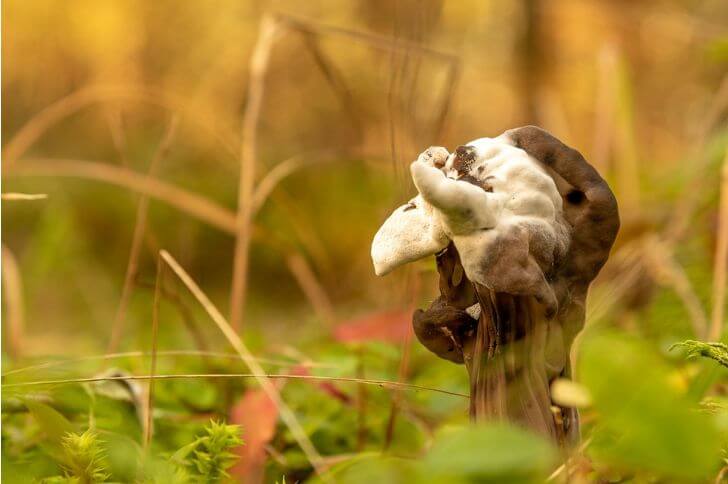
Fluted elfin saddles are strange looking mushrooms. They mostly occur under pines and oaks.
Identification:
The common name for this species of mushroom comes from its shape, which looks like a small saddle with fluted edges. The cap ranges in color from pale gray to black and can reach up to 2 inches in diameter. The underside of the cap has ridges or folds along with small pores that are also grayish-yellow in color.
The stem of the fluted elfin saddle mushroom is grayish-colored and wrinkled. Each mushroom has unique wrinkling, giving them a unique look. Are these black colored fungi edible? Some mushroomers say the caps are edible while others do not recommend them.
We recommend you give them a pass and opt for better tasting Nevada mushrooms like the ones below. Their scientific name is Helvella lacunosa.
2. Morels
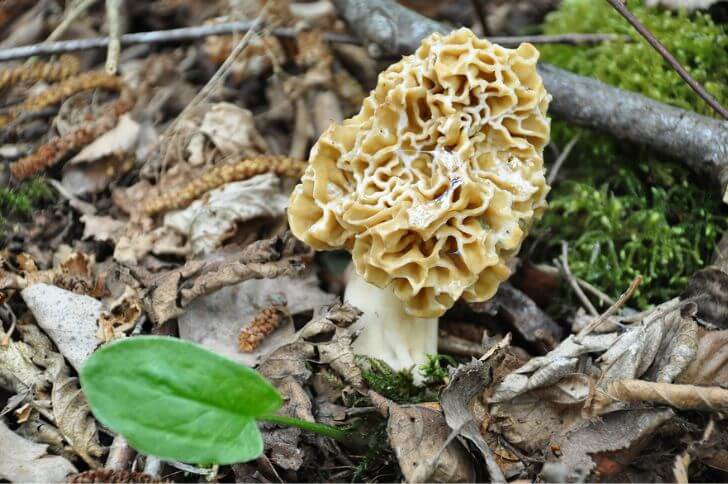
Are there morels in Nevada? Yes, from April to June. After the first week of rain, pick your gear and get hunting.
Identification:
To begin, it is important to understand that there are two primary types of morel mushroom: yellow and black. The yellow type is usually lighter in color and has a sharper point at the top of its cap, while the black variety typically has a darker hue with a flatter cap.
Additionally, the ridges on these mushrooms will appear different depending on whether you have one or the other – yellow morels tend to have fewer ridges than black morels. Morels are versatile cooking ingredients.
3. Battarrea Phalloides (desert stalked puffball)
A mushroom of the desert, the Battarrea Phalloides or desert is a dull-looking mushroom that favors dry regions.
Identification:
Like other puffballs, this small mushroom’s cap has a similar look. The 0.5-2 inch cap is convex shaped with incurved margins that gives it a puffball look.
Its outer layer can range in color from whitish to rusty brown. The gills underneath are white when young but darken with age. If cut horizontally across the stem it will reveal white unchanging flesh. The spore print should be rusty-brown when viewed under magnification.
These mushrooms of Nevada are classified as inedible.
4. Russula Brevipes
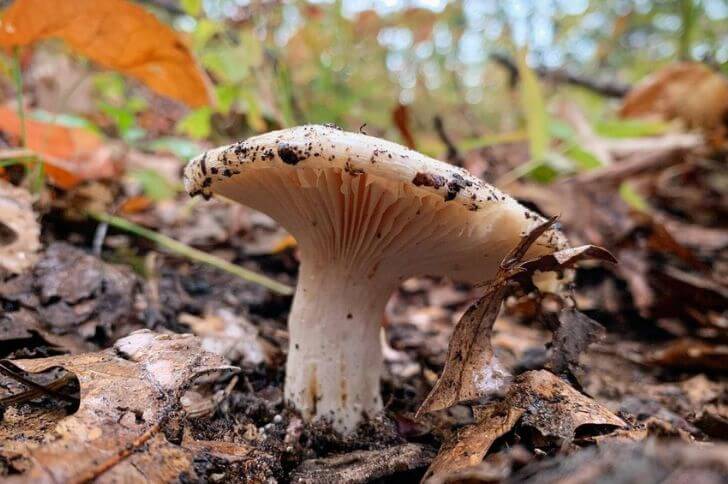
source: the.winter.cactus
Russula Brevipes, commonly called short-stem brittlegill, is quite common in Nevada. Like other russulas, it is edible.
Identification:
It is easily identifiable by its short stem, white cap and faint smell. Convex cap can grow to 12 inches.
The gills of this species are white when young and run down the top of the thick stem. Spore print color of Russula Brevipes can range from white to cream depending on the age of the specimen.
Furthermore, it has a brittle flesh which can easily tear apart with slight pressure. Its environment is typically found under hardwood trees during the summer and fall months.
What does short stem brittlegill taste like? Although edible, this Nevada mushroom is bitter making them unpalatable.
5. Phaeolus Schweinitzii (Dyer’s polypore)
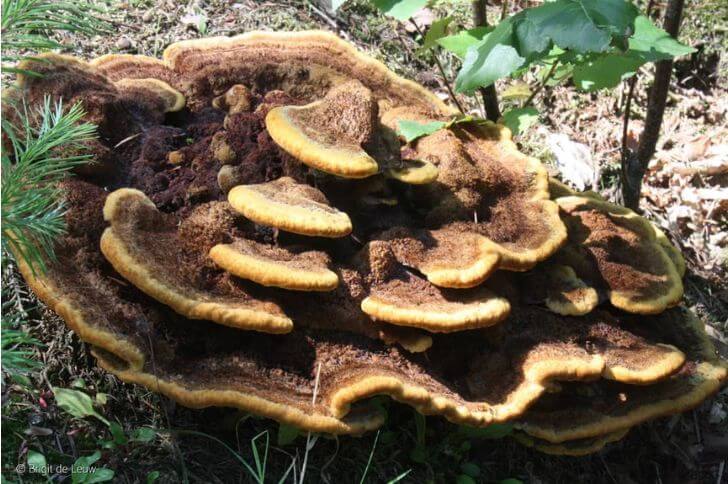
source:brigityvonmarie
Dyer’s polypore or the phaeolus schweinitzii is a common parasitic fungus that affects conifers. They have a silent partnership with beetles, leaving destruction in their wake.
Identification:
It is recognizable by its large size and unique shape. The cap of this mushroom ranges from 3-15 inches wide and has a fan-like or bracket shape. Its upper surface is usually brownish when young and changes to a beautiful rusty brown hue with yellowish concentric zones radiating on its margin.
When you touch young species, you’ll notice the velvety surface but older fungi will be ‘bald’.
The undersurface is olive-brown with pores that are decurrently attached to the stalk.
These mushrooms are gregarious, forming large fruiting bodies. Though inedible, the phaeolus schweinitzii has for centuries been used to create brown, green and yellow dyes.
6. Porcini (Boletus Edulis)
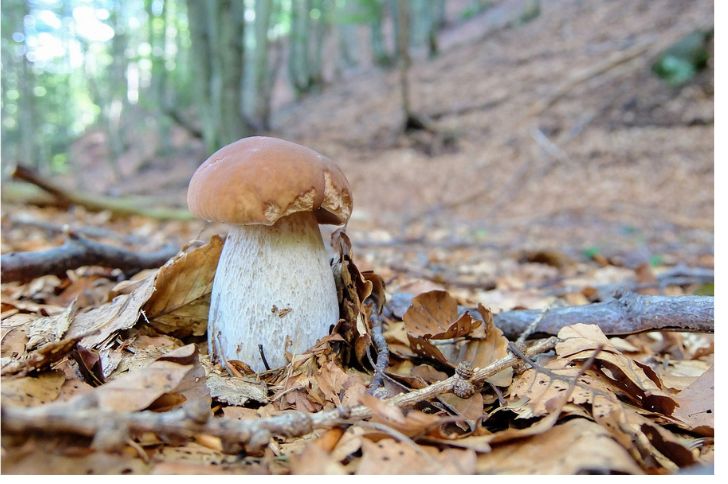
Nevada is home to the King of the mushrooms. Porcinis are one of the largest and tastiest mushrooms in the Silver State.
Identification:
Porcini mushrooms, you may know them as King Boletes, are unmistakable. Found in wooded areas near hardwoods such as oak trees, these boletes grow in groups.
The most important thing to remember when identifying porcini mushrooms is their unique convex-shaped cap with reddish-brown coloration and yellow-brown pores on the underside. Caps are pretty large with some weighing over 2 pounds.
The stem of the mushroom should be club-shaped, growing to a height of 10 inches. Note the whitish base. Additionally, you should check for an earthy smell which will help confirm that it’s a porcini mushroom rather than something else.
How big can porcinis grow? In 2013, one of these babies weighed a cool 7lb. But one forager to another, I recommend younger porcinis which have a meaty texture and an intense nutty flavor.
7. Red-Belted Conk
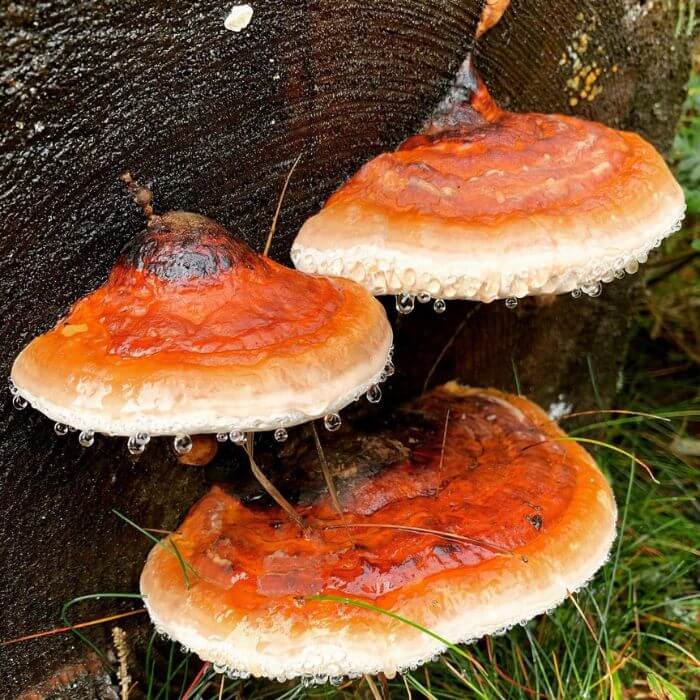
source: pilzpanorama
Red-belted conks are stunning. So, when you come across them while foraging, take a few photos.
Identification:
The most notable feature of the red-belted conk is its reddish brown exterior that is dry. The shape of these mushrooms is typically fan-like and their texture can range from soft and spongy to hard and leathery.
They also have a creamy-brown underside with yellowish pores that contain spores used for reproduction.
8. Oysters
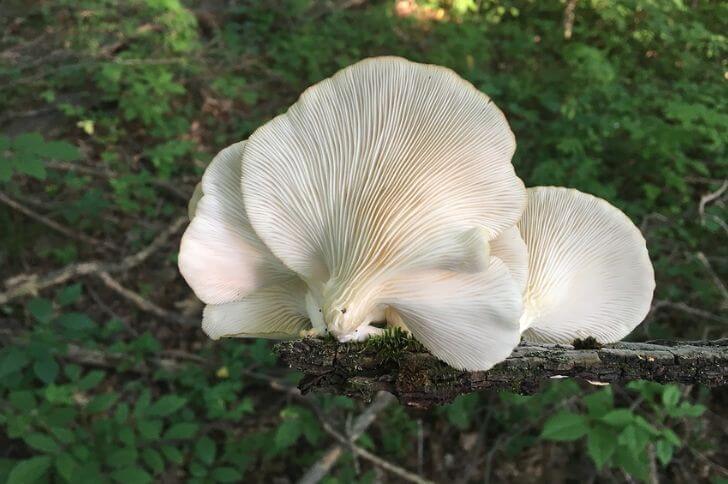
In Nevada, there are three types of oyster mushrooms you can get your hands on. The pearl oyster variety is common in the wild while its counterparts, pink and blue oysters are cultivated. You can also with a little patience and knowledge, you can grow them at home.
Identification:
Pearl oysters are most commonly identified by their large, pale gray caps and white stems. They have a soft yet firm texture and musty odor. They typically grow in clusters on dead or decaying wood, such as fallen logs or tree stumps.
While they may not look particularly appetizing, oyster mushrooms have an unmistakable flavor and texture that make them a popular ingredient in many dishes.
The blue and pink varieties have the similar-shaped caps and also occur in tight clusters.
How can you use oysters in Nevada? The easiest way to prepare them is sauteing in butter and garlic.
9. Chanterelles
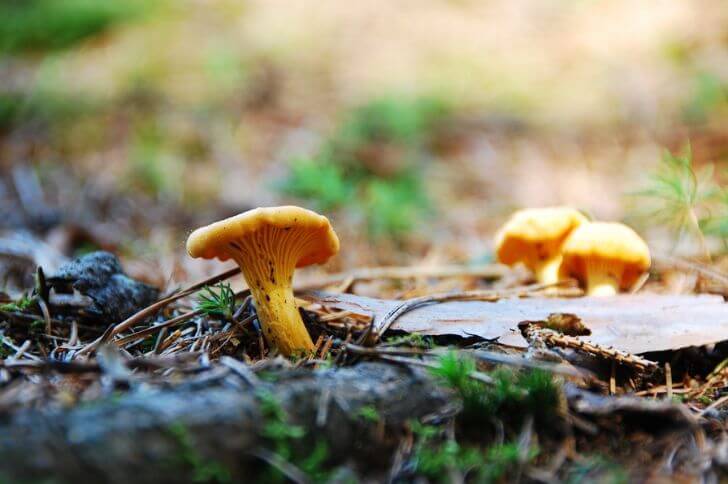
Chanterelles are another great sign of the start of mushroom foraging season in Nevada. These yellow mushrooms are easily identifiable.
Identification:
These distinctive Nevada fungi can be easily identified by their bright yellow to golden color, funnel-shaped cap, and delicate false gills that run down the ridges of the cap.
With a fruity aroma, chanterelles have a meaty texture and nutty taste that make them popular in many dishes from soups to salads.
10. Laetiporus Gilbertsonii
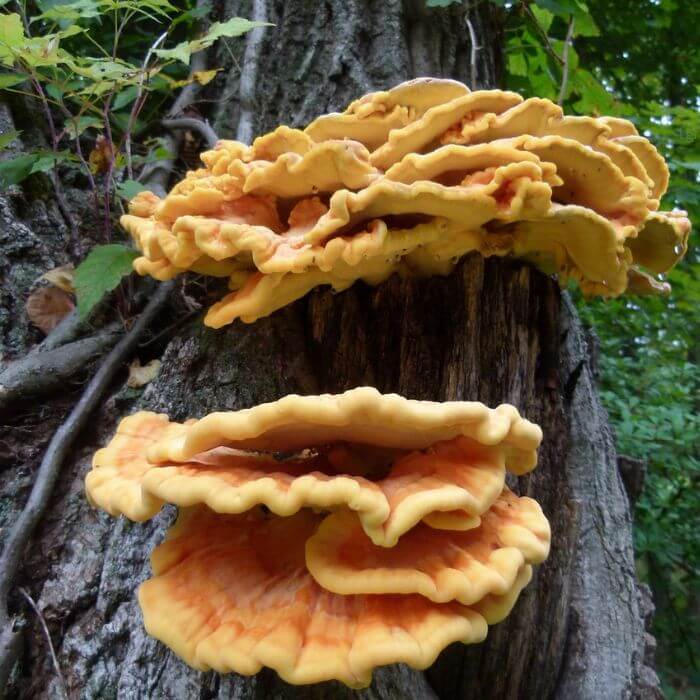
A close cousin of the laetiporus sulphureus or sulphur shelf mushroom, the laetiporus gilbertsonii mushroom is an edible, yellow-brown bracket fungus that is easily identifiable in the wild.
Identification:
This mushroom can be found growing on conifers and hardwoods in western North America and Nevada is no exception. The mushroom has a bright yellow to orange color when young, fading to tan with age.
Its bracket-like shape can reach up to two feet in diameter with a thick upper surface and thin lower surface. The underside has pores which are white when young becoming yellowish with maturity.
Like the king boletes above, their fruiting bodies grow big. The heaviest weighed about 100lb.
FAQs
What mushrooms grow in the desert?
Desert mushrooms in Nevada include:
- Desert stalked puffball
- Desert shaggy mane
- Desert truffles
What are red mushrooms in Nevada?
- Fly agarics
- Trichia decipiens
- Cortinarius sierraensis
- King boletes
Sources:
Hi There,
My name is Jenny. I’m the Chief Editor at Try Green Recipes and besides making yummy and healthy foods for my kids, grandkids, and friends. I’m new to the blogging world but I believe what I have to share is unique and will bring joy to your home. If you are adventurous and want try something tasty, let’s get started.

